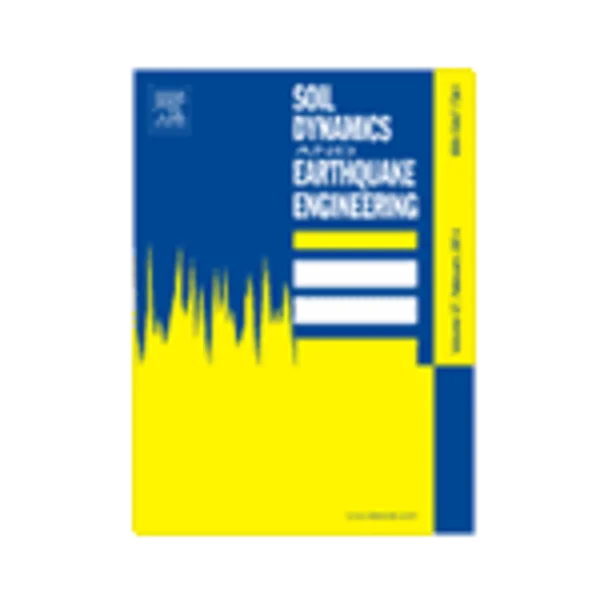-
characterisation of subsurface spatial variability using a cone resistivity penetrometer
جزئیات بیشتر مقاله- تاریخ ارائه: 1392/07/24
- تاریخ انتشار در تی پی بین: 1392/07/24
- تعداد بازدید: 1088
- تعداد پرسش و پاسخ ها: 0
- شماره تماس دبیرخانه رویداد: -
the subsurface spatial variation in clay soils, such as thin-layered sand seams, affects the mechanical strength and electrical resistivity. the objective of this study is the development and application of cone resistivity penetrometer (crp), which measures the cone tip resistance, sleeve friction, and electrical resistivity to evaluate the subsurface spatial variability. the electrical resistivity is measured at the cone tip to increase its resolution. two outer diameters of the cone resistivity penetrometers (crps) are developed:d=10 mm crp with a projected area of 0.78 cm2 and d=15 mm crp with a projected area of 1.76 cm2. the cone tip resistance is effectively separated using a friction sleeve. strain gauges are used to measure the mechanical strength, and coaxial type electrodes monitor the electrical resistivity. the application tests in the laboratory are conducted using layered soils and saturated sands. in addition, the penetration tests in the field are carried out and compared with the standard piezocone test. the penetration tests show that the soil layers and the density changes are clearly detected by the electrical resistivity and mechanical strength. field tests show that crp clearly evaluates the subsurface profile. this study suggests that crp may be a useful technique for the evaluation of subsurface spatial variability during penetration testing.
مقالات جدیدترین رویدادها
-
استفاده از تحلیل اهمیت-عملکرد در ارائه الگوی مدیریت خلاقیت سازمانی و ارائه راهکار جهت بهبود
-
بررسی تاثیر ارزش وجوه نقد مازاد بر ساختار سرمایه شرکت های پذیرفته شده در بورس اوراق بهادار تهران
-
بررسی تأثیر سطح افشای ریسک بر قرارداد بدهی شرکت های پذیرفته شده در بورس اوراق بهادار تهران
-
بررسی تأثیر رتبه بندی اعتباری مبتنی بر مدل امتیاز بازار نوظهور بر نقد شوندگی سهام با تأکید بر خصوصی سازی شرکت ها
-
تأثیر آمیخته بازاریابی پوشاک ایرانی بر تصویر ذهنی مشتری پوشاک ایرانی (هاکوپیان)
-
ایفای نقش it در آموزش ریاضی
-
مکانیابی بهینه ایستگاه های آتش نشانی با استفاده از مدل ahp با رویکرد پدافند غیرعامل ؛نمونه موردی، شهر بهبهان
-
بررسی عددی جانمایی ماده منفجره با توجه به شبکه آرماتور بر میزان تخریب در دال بتن مسلح
-
بررسی تأثیر اکسیژن درمانی تکمیلی بر میزان بروز و شدت تهوع و استفراغ بعد از عمل جراحی سزارین به روش بی حسی نخاعی
-
ارزیابی روش های مختلف فیزیکی شیمیایی نمک زدایی و انتخاب گزینه برتر جهت بهبود کیفیت آب های زیرزمینی (مطالعه موردی: آب چاه های بهارستانی تربت حیدریه)
مقالات جدیدترین ژورنال ها
-
مدیریت و بررسی افسردگی دانش آموزان دختر مقطع متوسطه دوم در دروان کرونا در شهرستان دزفول
-
مدیریت و بررسی خرد سیاسی در اندیشه ی فردوسی در ادب ایران
-
واکاوی و مدیریت توصیفی قلمدان(جاکلیدی)ضریح در موزه آستان قدس رضوی
-
بررسی تاثیر خلاقیت، دانش و انگیزه کارکنان بر پیشنهادات نوآورانه کارکنان ( مورد مطالعه: هتل های 3 و 4 ستاره استان کرمان)
-
بررسی تاثیر کیفیت سیستم های اطلاعاتی بر تصمیم گیری موفق در شرکتهای تولیدی استان اصفهان (مورد مطالعه: مدیران شرکتهای تولیدی استان اصفهان)
-
ارزیابی نقش مدیران شهری در مدیریت بحران
-
ارتباط منظر و نمای شهـری با مؤلفه های ژئوپلیتیک و قدرت سیاسی شهری
-
تحلیلی بر علل و عوامل کاهش انگیزه و تأثیر آن بر افت تحصیلی دانش آموزان
-
رابطه بین تیپ های شخصیتی با شادکامی و عزت نفس در بین دانشجویان دانشگاه امام جواد(ع) شهر یزد
-
the impact of mck+ prangkuti luhur towards the improvement of community life quality in bustaman village




سوال خود را در مورد این مقاله مطرح نمایید :